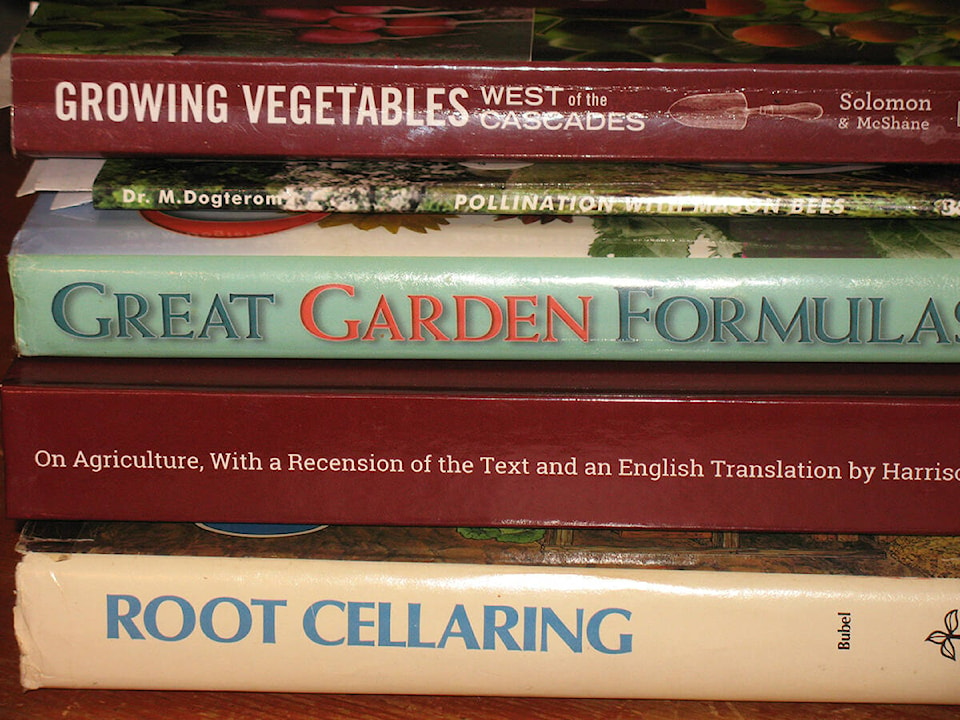By Mary Lowther
The recent deluge finds me confined indoors, unable to take advantage of the therapeutic qualities of my garden. At first this was a good thing because it provided time to clean the house and catch up on my long neglected to do list, but eventually every corner was dust free and every surface polished to mirror quality, leaving me wistfully staring out rain drenched windows in search of inspiration.
This is when David really gets on my nerves, because he is perfectly content to curl up with one of his histories to find out if Napoleon still lost at Waterloo. When I asked how he can stand the rains he didn’t even look up.
“I was born here,” he chuckled. “That’s why I have webbed feet and gills. This is the time of year we catch up on our reading.” I replied that I had to catch up on my writing. I generally base my articles about what I am doing in my own garden, but right now that would be nothing; the ground is simply too wet to work.
“Then why don’t you write a column about your favourite gardening books?” he asked. “That gives you an excuse to revisit them and provides you with material at the same time.” David knows that I am unable to resist a twofer.
This sent me to my library to select my best books, but there are so many! I wanted to recommend them all but time and space are limited. I considered Lucius Junius Columella’s treatise on Roman agriculture, which deserves consideration based on antiquity; 2,000 years old yet still relevant. There was Ron Engeland’s useful Growing Great Garlic and other wonderful books collected over the years, and I was able to pass several enjoyable hours winnowing out my top five.
I’ll start with Steve Solomon’s 35th edition of Growing Vegetables West of the Cascades. When I first read it I felt like I had been gardening underground all my life and finally broke through the surface to see a whole new world. Solomon explains clearly and compellingly that North American soils are gradually losing their ability to produce life sustaining crops as minerals in the harvest leave the farm gate, never to return. Farmers, even organic ones, fail to replace these lost minerals so the crop becomes less nutritious and we consumers become less healthy. Nigel Palmer, in his book The Regenerative Grower’s Guide to Garden Amendments, describes how to extract minerals from local sources, but Steve Solomon is the pioneer in this field (pun intended) and deserves first place on my list.
In the number two spot, Rhonda Massingham Hart delivers a comprehensive guide for organic pest control titled Bugs, Slugs and Other Thugs. This well laid out book provides descriptions and drawings of garden pests, with myriad ways to prevent them from destroying our crops. Hart taught me to prevent slug infestation (as much as is possible) by not using a mulch until plants are well established or the temperature is over 21 C, when slugs are less active. This led me to create a mulch and plant free barrier around my entire plot that finally stemmed the tide.
The third book, really a booklet, is Pollination with Mason Bees, written by Dr. Margriet Dogterom and published in B.C. It is full of well-written and illustrated information on mason bees, also known as blue orchard bees. I didn’t realize they resembled fat flies until looking closely at the pictures, and now feel uncertain when I think about all the “flies” I have killed over the years. Dr. Dogterom explains how we can capture our own mason bees in the woods and bring them back to the yard to pollinate early blooming fruit trees, so I’m getting David to make a few bee houses that we’ll hang in the woods in February.
It’s important to learn how to delegate. I’ll explain that this will get us more nectarines and ask him for a half dozen little houses. He’ll make 20 and we’ll line the river with them, then bring them home to the orchard as per the instructions.
I’m running out of room and haven’t even gotten to the last two books. Great Garden Formulas by Joan Benjamin and Deborah L. Martin is a clever book that breaks down everything gardening into formulas. They arrange them alphabetically by topic with a list of ingredients followed by method. For example, their formula for “Loose Leaf Compost” begins with a discussion why composting leaves is important: trees draw minerals from deep in the soil up into the leaves that can be returned to the soil. They describe simple methods to turn leaves into leaf mold and explain how to use it.
The fifth book is Root Cellaring, by Mike and Nancy Bubel. This outlines many methods of storing produce, so if one idea doesn’t work there are plenty more to explore. This is where I learned to store carrots in layers of damp sawdust in a cold area, just above freezing. I didn’t have sawdust so I used sand one year and peat moss and coir in another: both worked well.
Any book mentioned above would make an excellent Christmas gift for the gardener in your house, especially if it is yourself. The bibliography at the end of a book can also offer great suggestions, and a subscription to a gardening magazine like Small Farm, published in Victoria, makes a gift that lasts all year. It’s in the giver’s own best interest to give a present like this because the gardener might just reciprocate with the delicious results from this added knowledge.
I guess I have to concede David is right, this once. This is an excellent time to catch up on my reading.
Please contact mary_lowther@yahoo.ca with questions and suggestions since I need all the help I can get.
